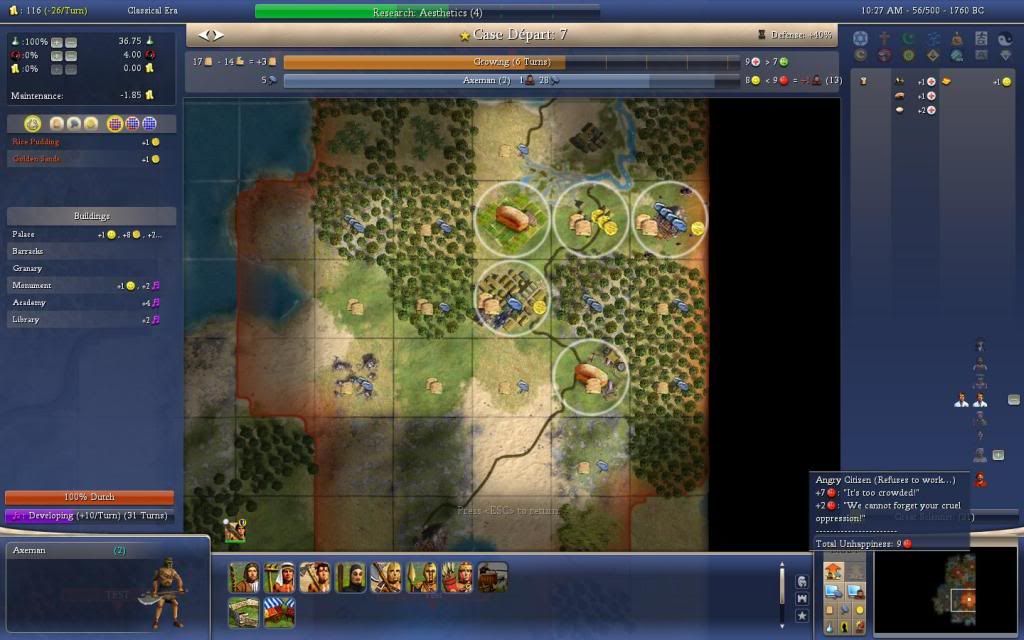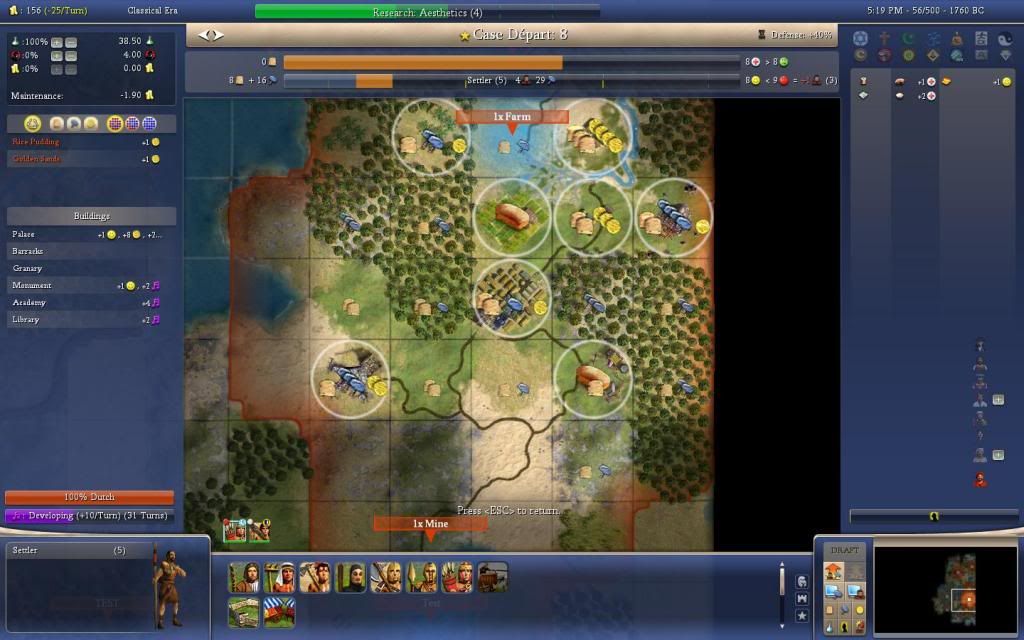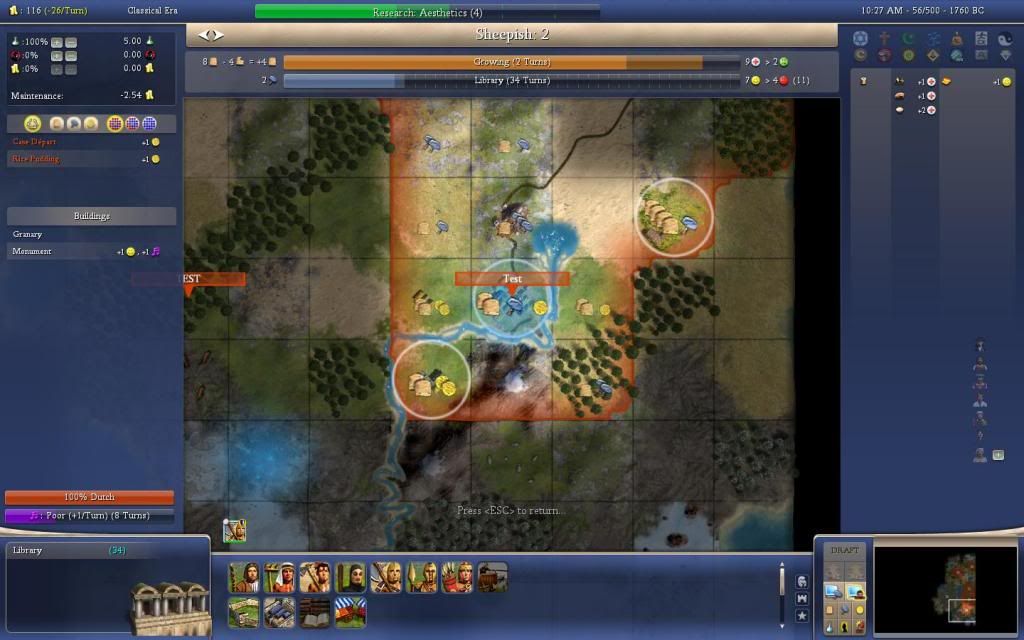The last posted save is still a little rough around the edges, although it is definitely heading in the right direction. My thoughts:
- Worker movement differs from save to save. If you have not tried to already, on T42, have two Workers move to chop the Forest 1N of Sheepish. When they later move north, both can road the tile 1SW of the capital. Eventually: Worker 2 = Quarry; Worker 3 = move 3N, farm and cancel, then move to Grassland hill by Rice Pudding and mine.
It will delay the founding of Amsterdam. Also we get the marble time with growth in Case Départ on turn 51.
- By roading this tile, I'd imagine that Worker 2 can return to Sheepish sooner and complete an earlier cottage (your Sheepish has been working an unimproved tile for a few turns).
I think sheepish will have cottage in time as we can expect a new worker soon. The test game shows we will be overrun with workers to the extent that our economy crash.
- Don't build Wealth. Your PPP states that you build Wealth on T48 in the capital. Your latest save has Sheepish and Golden Sands building Wealth. Infrastructure and units are much more valuable.
This was a response to feedback by soundjata that wealth was more important then hammers. I'm kinda agreeing at the moment. We have enough hammers from food and can turn hammer to wealth. Getting Literature has higher return then libraries in most cities.
- Don't run Scientists after we generate an Academy. The capital should be developing its tiles, especially Cottages. We also need units (this is a city with a Barracks) and hammer tiles are boosted by 50% when building a Settler. Regarding this latter point, any time that you have spare citizens and lack Cottages, compare the yields of the Silk (1F 2H 1C) with the Plains Hill (3H). Rounding of
 and
and  will affect the actual yield... i.e. sometimes the Silk will contribute +2B, sometimes the PH +2H.
will affect the actual yield... i.e. sometimes the Silk will contribute +2B, sometimes the PH +2H.
As I stated the scientists was a mistake in the test game.
- City #5 should be set-up differently. It is imperative to whip a Granary ASAP, which means that it should be chopped. At size 1, a Granary adds +3F to a city that works the Cow, and +5F to a city that works the Corn. So the total yield will either be +6F +3H or +10F. Without a Granary at size 2, the city will yield +6F +3H. So it is better to whip earlier and allow the unhappiness to decay sooner.
Makes sense to chop forest earlier.
For this last point, you may be able to justify postponing the Granary to size 3 if the city can generate ~30H from the Cow in this time, since this would preserve a Forest. But more testing would be needed, to see whether the timing works out (I don't think that it will, but it might).
We can whip the granary on turn 61 when it grows to size 3.
Sorry that I don't have time to produce a more detailed comparison. This is just my impression from looking at your save file.
To satisfy
Duckweed (and make it easier on the rest of us

), you could post pictures of each city and the overall empire on the last turn of your PPP. This will help illustrate the final product of your plan.
I will take some screen shots.
Dubioza used to post both
text and
images for each turn, although I am personally not that committed.





 versus 41
versus 41  /
/ 
 resources a few turns earlier should be better than those worker turns a few turns earlier.
resources a few turns earlier should be better than those worker turns a few turns earlier. and
and  ), you could post pictures of each city and the overall empire on the last turn of your PPP. This will help illustrate the final product of your plan.
), you could post pictures of each city and the overall empire on the last turn of your PPP. This will help illustrate the final product of your plan. 